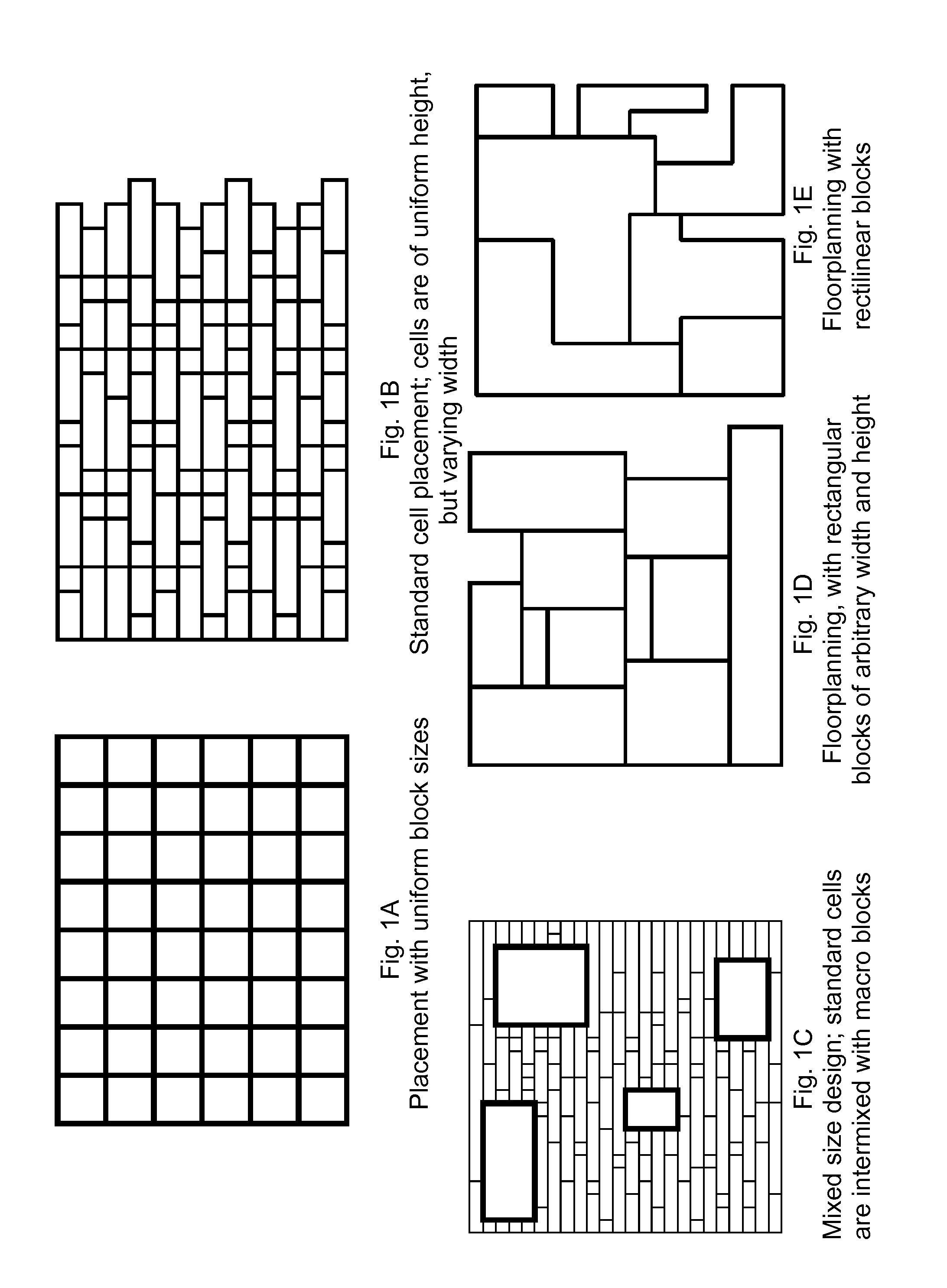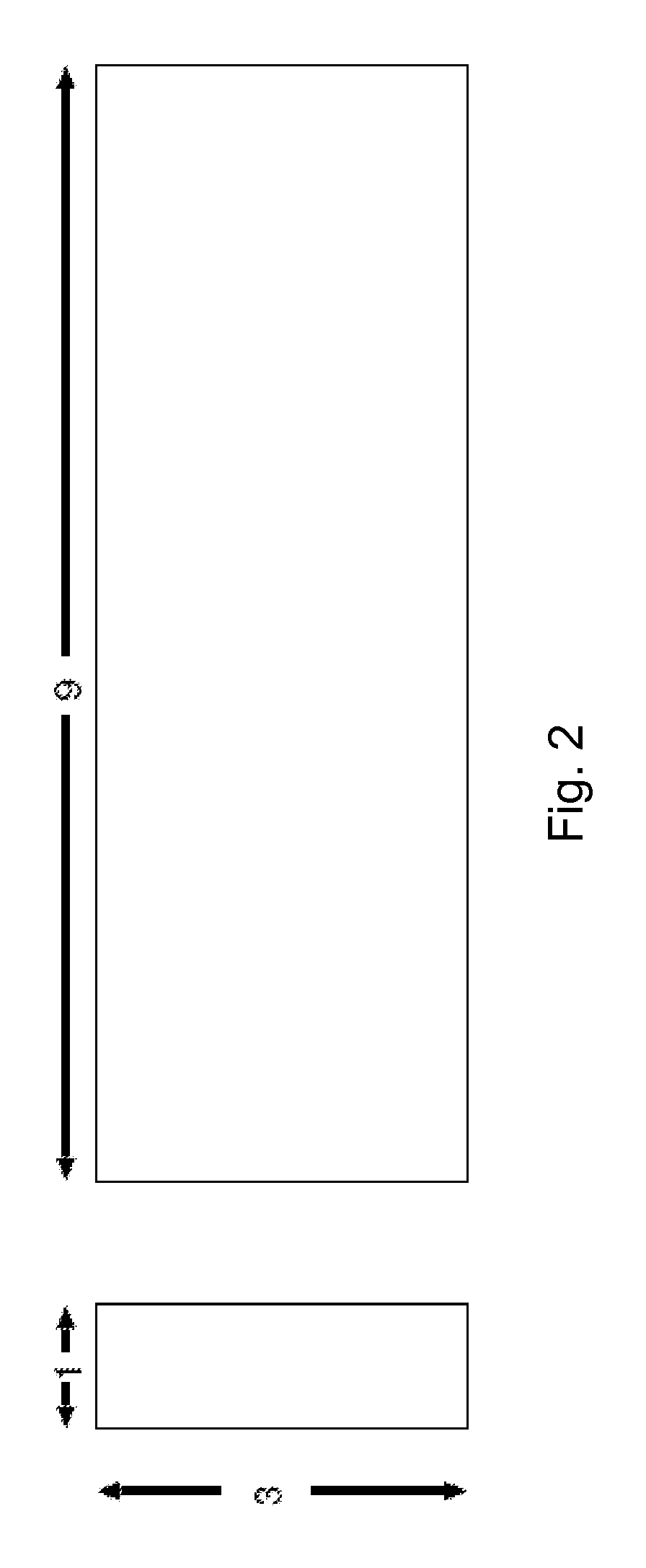Standard block design: an effective approach for large scale floorplanning
a technology of floor planing and block design, applied in the field of standard block design, can solve the problems of difficult legalization after analytic or fractional cut bisection, difficulty in addressing the problem directly in a traditional “floor planing” and lose the solution quality, and achieve the effect of easy implementation
- Summary
- Abstract
- Description
- Claims
- Application Information
AI Technical Summary
Benefits of technology
Problems solved by technology
Method used
Image
Examples
Embodiment Construction
[0062]In accordance with a first embodiment of the invention, “HB” [8] placements were first converted to “standard block” formulations, using the method described. The number of soft and hard blocks in the “original” version, and the number of “cells” and “blocks” in the conversion according to the present invention, are shown in the first few columns of Table 1.
[0063]Table 1: Wire length comparisons of the “standard block” approach according to the present invention, using the mixed size placement tools feng shui 5.1, with the legalizer according to the present invention, and Capo 9.5. Capo 9.5, converts floorplanning problems into mixed size placement problems in which all soft blocks are square; these results are shown in the third wire length column. The methods of PATOMA and the floorplanner Parquet 2 are compared. For two designs, HB06 and HB15, the automatic conversion provided by Capo 9.5 resulted in overlapping (non-legal) placements.
[0064]
Original-BenchmarksStandard-Block...
PUM
 Login to View More
Login to View More Abstract
Description
Claims
Application Information
 Login to View More
Login to View More - R&D
- Intellectual Property
- Life Sciences
- Materials
- Tech Scout
- Unparalleled Data Quality
- Higher Quality Content
- 60% Fewer Hallucinations
Browse by: Latest US Patents, China's latest patents, Technical Efficacy Thesaurus, Application Domain, Technology Topic, Popular Technical Reports.
© 2025 PatSnap. All rights reserved.Legal|Privacy policy|Modern Slavery Act Transparency Statement|Sitemap|About US| Contact US: help@patsnap.com



